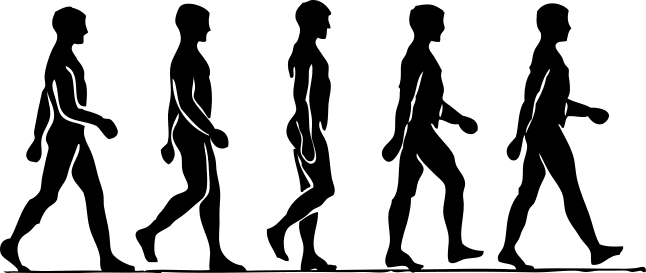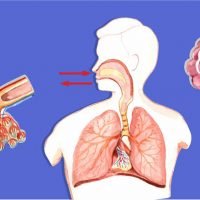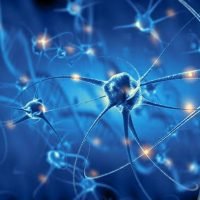Locomotion and Movement important questions from NCERT for NEET Preperation and CBSE with explained Answer Keys.
These questions of Locomotion and Movement are totally based on NCERT and previous year questions.

Locomotion and Movement Answer Keys are totally explained with NCERT proper page number.
Let’s start solving and,
ALL THE BEST
Locomotion and Movement NEET Mcq Important NCERT Questions
1) Tendon is a structure which connects?
a) A bone with another bone
b) A nerve with a muscle
c) A muscle with a bone
d) A muscle with a muscle
2) Sarcolemma is a membrane found over in?
a) Nerve fibre b) Cardiac muscles
c) Skeleton muscles fibre d) Heart
3) Ensheathing of muscles is called?
a) Fascia b) Peritoneum
c) Ligament d) Tendon
4) Standing on tip toe is an example of?
a) Elevation b) Flexion
c) Extension d) Retraction
5) Action potential in a muscles fibre is?
a) – 90 mV b) – 80 mV
c) 45 – 50 mV d) 90 mV
6) The generation of excitation-contraction coupling involves all the following events except?
a) Generation of end-plate potential
b) Release of calcium from troponin
c) Formation of cross-linkages between actin and myosin
d) Hydrolysis of ATP to ADP
7) The special contractile protein actin is found in?
a) Thick filaments of A-bands
b) Thin filaments of I-bands
c) Both thick and thin bands
d) Whole of myofibril
8) The contractile protein of skeleton muscle involving ATPase activity is?
a) Myosin b) Actin
c) Actinin d) Troponin
9) Muscles responsible for the movement of food in the stomach are?
a) Unstriated b) Striated
c) Cardiac d) None of the above
10) Muscles are red because of the presence of?
a) Myoglobin and mitochondria
b) Haemoglobin and golgi bodies
c) Globulin and mitochondria
d) Protein and lysosome
11) The dark bands in a myofibril are due to overlapping of?
a) Only thick bands
b) Only thin bands
c) Both thick and thin bands
d) None of the above
12) The muscle fatigue occurs due to accumulation of?
a) Pyruvic acid b) ATP
c) Lactic acid d) CO2
13) The dark bands (Black bands) of a skeletal muscles are known as?
a) Anisotropic or A-band
b) Isotropic or I-band
c) Z-band
d) Both in A and I-band
14) Major protein in the thick filament of skeletal muscles fibre is?
a) Tropomyosin b) Myosin
c) Actin d) Troponin
15) Muscles of the heart are?
a) Voluntary, striated
b) Voluntary, smooth
c) Involuntary, striated
d) Involuntar, smooth
16) Largest number of muscles will be found in?
a) Head b) Neck
c) Back d) Arm
17) Contraction of a muscle is caused by?
a) Myosin b) Actin
c) ATP d) Actomyosin
18) Ribs are attached to?
a) Scapula b) Sternum
c) Clavicle d) Ilium
19) Invertebral disc is found in the vertebral column of?
a) Birds b) Reptiles
c) Mammals d) Amphibians
20) Which one of the following is showing the correct sequential order of vertebrae in the vertebral column of human beings?
a) Cervical – lumbar – thoracic – sacral – coccygeal
b) Cervical – thoracic – sacral – lumbar – coccygeal
c) Cervical – sacral – thoracic – lumbar – coccygeal
d) Cervical – thoracic – lumbar – sacral – Coccygeal

21) Knee joint and elbow joints are examples of?
a) Saddle joint b) Ball and socket joint
c) Pivot joint d) Hinge joint
22) Typically all mammals have seven cervical vertebrae except in?
a) Elephant b) Man
c) Kangaroo d) Sea cow
23) The membranous areas between the cranial bones of the foetal skull are called?
a) Areolas b) Foramina
c) Sutures d) Fontanelle
24) A greater trochanter is found in?
a) Femur b) Humerus
c) Ulna d) Radius
25) Bone is distinguished from the cartilage by the presence of?
a) Collagen b) Blood vessels
c) Lymph vessels d) Haversian canals
26) Interphalangeal joints are also called as?
a) Fixed joints b) Hinge joints
c) Movable joints d) Straight joints
27) The major function of the intervertebral discs is to?
a) Absorb shock
b) String the vertebrae together
c) Prevent injuries
d) Prevent hyperextension
28) A shallow depression in the scapula which receives the head of the upper arm bone is known as the?
a) Acetabulum b) Neural arch
c) Glenoid cavity d) None of the above
29) Patella, the knee cap is the example of?
a) Cartilage gland b) Replacing bone
c) Sesamoid bone d) None of the above
30) Humerus bone is situated in?
a) Thigh b) Lower arm
c) Upper arm d) Shank
Locomotion and Movement Answer Keys
1) C. Tendon is a tough non-elastic connective tissue that joins a muscle to a bone. It is consists of collagen fibres.
2) C. Sarcolemma is present on the outside of skeletal muscle fibre. In the region of attachment, the sarcolemma is folded to form finger like projections.
3) A. Fascia, actually is a sheet of connective tissue which covers the muscle.
4) A. Elevation
5) C. 45-50 mV (The change in the membrane voltage from -70 mV at rest to +30 mV at the end of depolarization is a 100-mV change. That can also be written as a 0.1-V change.)
6) B. Release of calcium from troponin is wrong; it is released from sarcoplasmic reticulum.
7) B. Thin filaments of I-bands
8) A. Myosin protein forms anistropic band its centers forms ‘M’ line i.e. muscle fibre itself consist of myosin filaments. The cross bridges present in myosin molecules are enzymatic in nature and always tends towards, the center of myosin filament thus causes the contraction of muscle fibre.
9) A. Unstriated, involuntary, visceral msucles.
10) A. Myoglobin and mitochondria
11) C. Both thick and thin bands
12) C. During muscle fatigue due to deposition of lactic acid, cytoplasm becomes acidic thereby enzyme activity stops and food is not oxidized and as the energy is not available, muscular contraction stops.
13) A. Anisotropic or A-band. A-band has its middle a light zone called H-zone.
14) B. Myosin filaments are thicker and confined to the A-bands only. They are composed of myosin protein.
15) C. Involuntary, striated
16) C. Back has maximum muscles
17) D. During muscle contraction, myosin and actin form cross bridges. This complex is known as actomyosin complex.
18) B. Sternum
19) C. Mammals
20) D. Cervical – thoracic – lumbar – sacral – Coccygeal
21) D. Hinge joint
22) D. In aquatic mammals (sirenia) cervical vertebrae are fused into a solid bony mass because of reduced neck in the manatees (sea caw) there are six cervical vertebrae only and the neural arches are sometimes incomplete.
23) D. Fontanelle is a space between the bones of the skull in an infant or fetus, where ossification is not complete and the sutures not fully formed. The main one is between the frontal and parietal
bones.
24) A. The greater trochanter and lesser trochanter are projections that serve as points of attachment for the tendons of some of the thigh and buttock muscles.
25) D. Haversian canals are the characteristic features of bone.
26) B. Hinge joints are found in the knee, elbow, ankle and interphalangeal joints.
27) A. Absorb shock
28) C. Glenoid cavity aticulates humerus with scapula.
29) C. Patella is the small bone in knee joint between femur and tibia. It is a sesamoid bone developed in the tendon of quadriceps femoris muscle.

30) C. Each upper arm or branchium of mammals also has a single long humerus bone whose swollen, spherical, and smooth proximal end or “head” fits into a glenoid cavity of the pectoral girdle on its side.





 155 out of 200 questions were directly asked from these notes in NEET 2024
155 out of 200 questions were directly asked from these notes in NEET 2024
